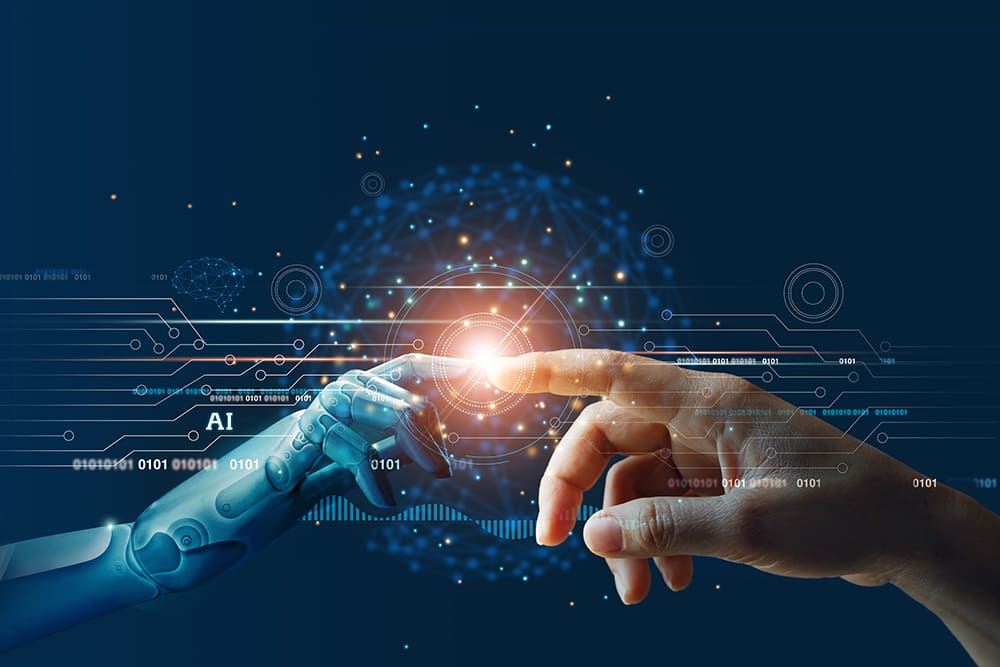Artificial Intelligence (AI) has emerged as a powerful force, transforming the way we live and work. The advancements in AI technology have impacted various industries, such as healthcare, finance, transportation, and manufacturing. In this article, we will explore the top 10 AI technologies that are making waves in the industry.
1. Natural Language Generation (NLG)
As machines process information differently from the human brain, NLG emerges as a prominent technology. It effortlessly converts structured data into human-readable language, allowing content developers to automate content creation. By leveraging algorithms, machines can convert data into desired formats, enabling automated content promotion across social media platforms and other media outlets. With reduced human intervention, data visualization through charts and graphs becomes more accessible.
2. Speech Recognition
Bridging the gap between humans and computers, speech recognition plays a vital role in AI. This technology facilitates the conversion of human speech into a format easily comprehensible by machines. With the ability to recognize and interpret multiple languages, speech recognition has become a cornerstone of modern human-computer interactions. A prime example of this technology is Siri, the voice-activated virtual assistant on iPhones.
3. Virtual Agents
Instructive designers now rely heavily on virtual agents. These computer applications effectively interact with humans, offering customer service and assistance through chatbots embedded in web and mobile applications. Google Assistant aids in organizing meetings, while Amazon’s Alexa simplifies the shopping experience. These virtual agents also act as language assistants, tailoring their responses based on user preferences. Moreover, they serve as software-as-a-service, catering to a wide range of industries.
4. Decision Management
Organizations today leverage decision management systems to convert and interpret data into predictive models. These systems provide real-time information, empowering businesses to make swift decisions, manage risks, and automate processes. Decision management finds widespread application in sectors such as finance, healthcare, e-commerce, and insurance, augmenting organizational decision-making capabilities.
5. Biometrics
Deep learning, a branch of AI that harnesses the power of artificial neural networks, has emerged as a key technique. Deep learning enables computers and machines to learn from examples, mimicking the human learning process. With hidden layers within neural networks, deep learning leverages this hierarchical structure to automate predictive analytics. Its applications range from detecting objects from satellites in aerospace and military domains to enhancing worker safety and detecting cancer cells.
6. Machine Learning
Machine learning, a division of AI, empowers machines to make sense of data without explicit programming. By utilizing algorithms and statistical models, machine learning enables businesses to make informed decisions based on data analytics. Industries such as healthcare, finance, and retail rely on machine learning to predict diseases, identify investment options, and analyze customer preferences and behavior.
7. Robotic Process Automation (RPA)
RPA, an AI application, involves configuring software robots to interpret, communicate, and analyze data. By automating repetitive, rule-based operations, RPA enhances operational efficiency and productivity.
8. Peer-to-Peer
Peer-to-Peer networks have revolutionized the way systems and computers connect and share data. By eliminating the need for data transmission through a central server, peer-to-peer networks offer a cost-effective solution to complex problems. This technology finds particular relevance in the realm of cryptocurrencies, where individual workstations connect and exchange data without the need for traditional servers.
9. Deep Learning Platforms
Deep learning, with its artificial neural networks and hidden layers, continues to make significant strides in AI. By teaching computers and machines to learn from examples, deep learning enables automation of predictive analytics. Its applications span various domains, including aerospace and military, where it aids in object detection from satellites, enhances worker safety by identifying risk incidents, and assists in detecting cancer cells.
10. AI-Optimized Hardware
As the demand for AI software grows, the need for specialized hardware to support it has emerged. Traditional chips are inadequate for handling the complex computations required by AI models. Consequently, a new generation of AI-optimized hardware is being developed, featuring CPUs capable of handling scalable workloads, specialized silicon for neural networks, and neuromorphic chips. Companies like Nvidia, Qualcomm, and AMD are spearheading the creation of these chips, which hold great promise for industries such as healthcare and automotive.
Which is the best AI technology?
Each AI technology has its strengths and weaknesses. The best AI technology depends on the specific use case and the data available. For example, for image recognition tasks, Deep Learning is the best technology.
What are the 7 types of AI?
The seven types of AI are:
What are the 9 types of AI?
In addition to the seven types of AI mentioned earlier, there are two more types of AI:
AI – Name its most used technologies
What is AI’s name, its most used technologies? There are several AI technologies that are widely used today.
Conclusion
AI is changing the world, and the top 10 AI technologies we’ve discussed are at the forefront of this transformation. From Machine Learning to Robotics, each technology has its strengths and weaknesses. As AI continues to evolve, it’s likely that we will see even more advancements in the field.
